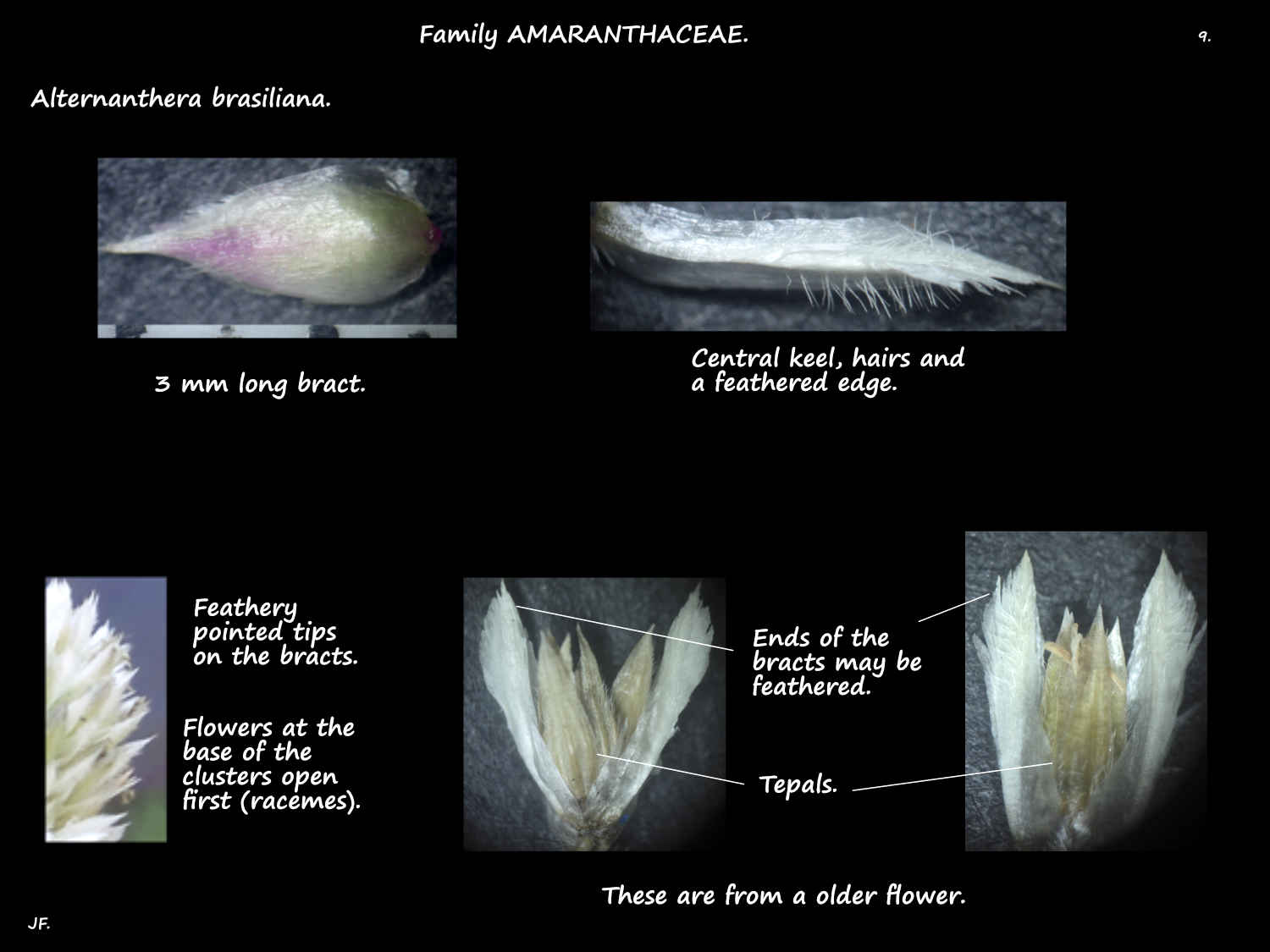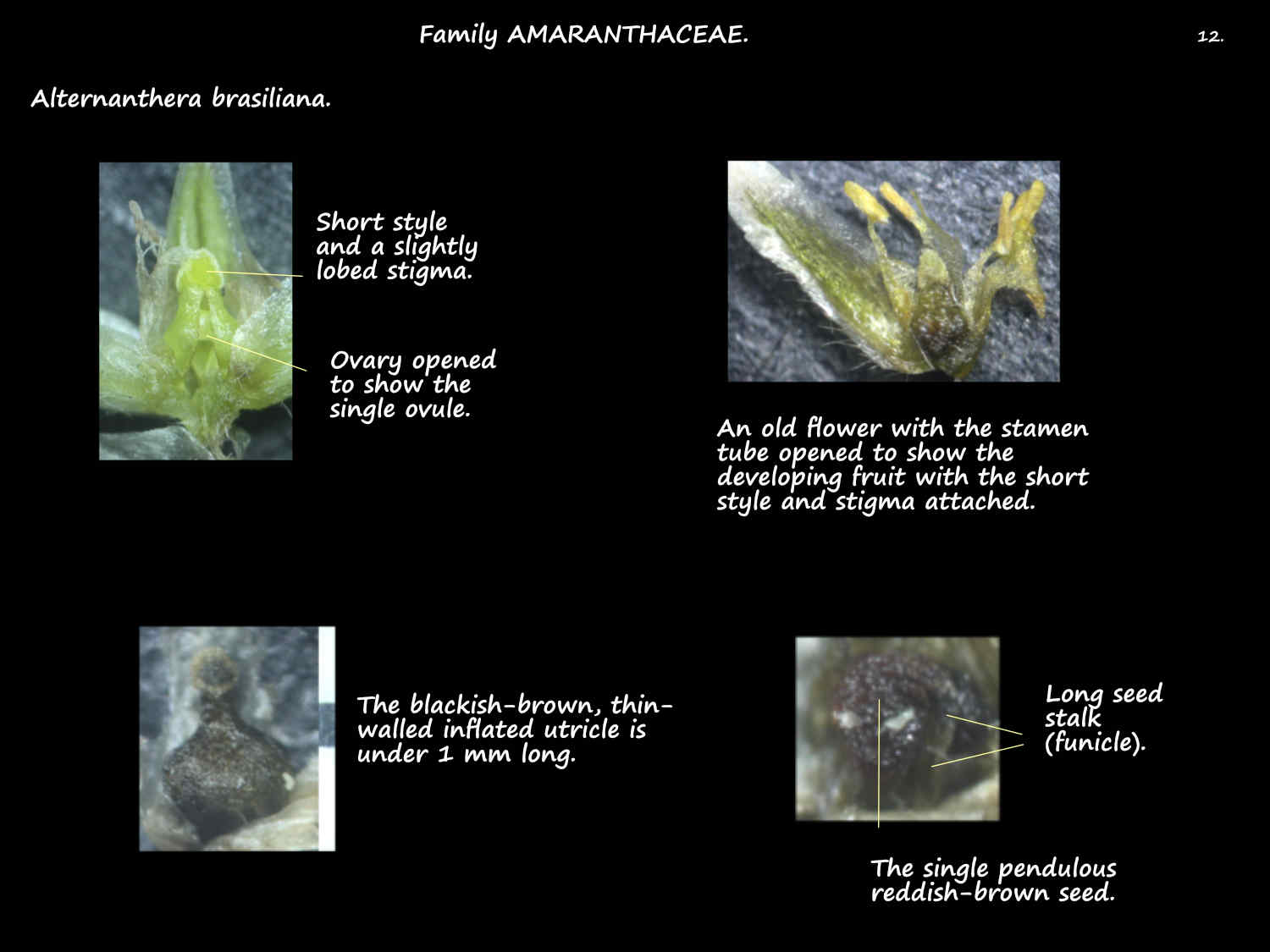Alternanthera brasiliana.
Purple joyweed has been known as Alternanthera dentata, Gomphrena brasiliana and Gomphrena dentata.
Purple alternanthera is native to Southern, Central and South America and the Caribbean.
It is naturalised in scattered areas of S. E. Queensland and along the coast to the north.
It is commonly seen in gardens and on waste ground.
The perennial plants are herbs around 50 cm high or small shrubs up to 2 m.
Stems can be prostrate, prostrate then erect or erect.
Long stems, up to 4 m may scramble over other vegetation.
The shiny deep reddish-purple stems have dense simple white hairs that decrease over time.
Prostrate stems root at the nodes allowing the plants to cover large areas.
The oppositely arranged leaves have no petiole or one up to around 1 cm long.
The ovate to elliptic blades, with a pointed tip are up to 10 cm or more in length.
The edges are smooth, the upper surface a deep purple and the lower surface a paler reddish-purple.
The glossy leaves have simple white hairs mainly on the lower surface.
These become less but adult leaves usually still have a few.
Inflorescences are terminal on the main and short axillary side branches.
They are on a hairy peduncle up to 10 cm long.
The spherical heads or short spikes, up to 2 cm long have a hairy midrib.
The dense clusters are racemes with the lower flowers opening first.
Flowers are on no stalk (pedicel) or a 1 to 2 mm one.
At the base is 1 persistent bract and 2 bracteoles that persist or fall.
Bracts and bracteoles are up to 5 mm long.
The 5 free whitish or greenish-white tepals (sepals) are around 4 mm long.
They have a pointed tip and hairs on the outer surface.
Typical flowers have 5 fertile stamens with their bases fused into a tube.
There are pseudo-staminodes between the stamens.
Some flowers only have 2 or 3 fertile stamens and a variable number of pseudo-staminodes.
The ovary has a stigma on a very short style or directly attached to the ovary.
The 2 mm long brown fruit are an indehiscent utricle with 1 seed.
The other flower parts often remain attached.
There are 2 subspecies and a number of cultivars.
J.F.















